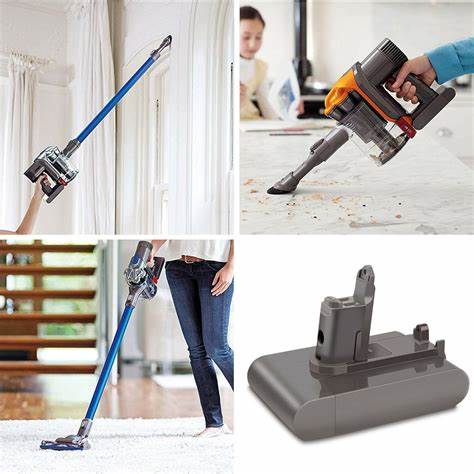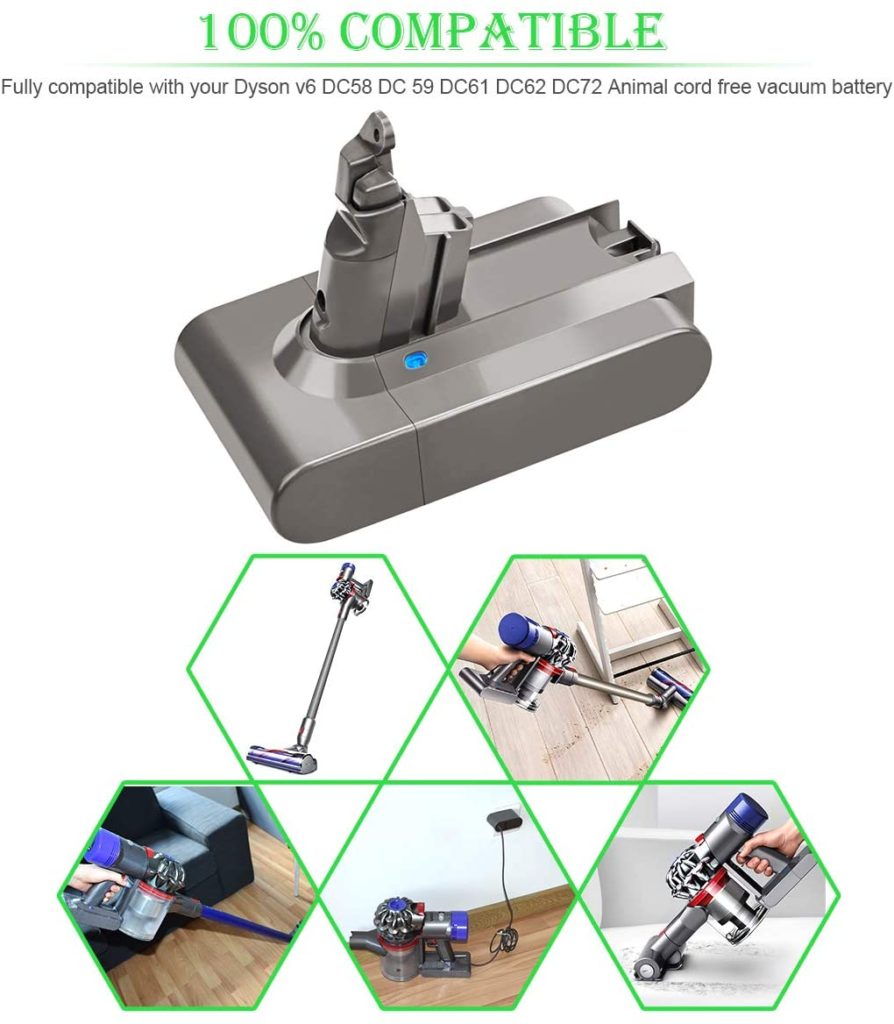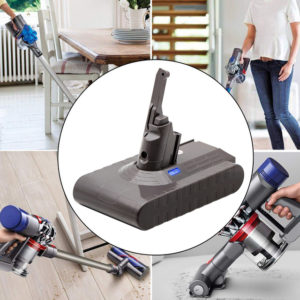
Dyson cordless vacuum cleaners are known for excellent suction and air filtration, a long list of cleaning tools and attachments, ease of use. However, it must be pointed out that some errors can be contained if proper maintenance practices are observed. Today Batteries-company.com battery experts share some maintenance measures you could put in place to help you avoid emergency breakdowns and costly repairs.

1. Cleaning The Inner Part Of the Dyson V6 Vacuum Cleaner
The inner, hidden chambers of the vacuum cleaning machine normally accumulate debris over a period of time. If left unattended, this may significantly lower the overall performance of the Dyson cleaner.
2. Cleaning Bearings and Brushes
This should be done on a weekly basis. Most Dyson vacuums come with cleaning tools you could use to remove debris and any entanglements on the bearings and brushes. Alternatively, a fine-toothed comb could do the job as well. Accumulated debris can potentially slow down the motor.
Depending on the frequency of vacuuming, you may need to replace the Dyson brushes sooner or later to maintain or enhance the cleaning performance.
3. Cleaning The Front Caster Wheel
The wheel module often suffers from accumulated hair and other debris. When it stops rotating, begins squeaking or falls out, this could be signs that it needs cleaning. After removing it from its housing, be sure to check the axle and wheel cavity for entangled and accumulated debris.
4. Keep Your Dyson V6 Cleaner Battery In Good Shape
Dyson vacuum cleaner batteries are either lithium-ion (Li-Ion) or nickel-metal hydride (Ni-MH). The best practice is to ensure that these batteries are always charged. When the vacuum is not in use, the charged Ni-MH battery should be removed and stored in a cool, dry place. The Li-Ion Dyson SV03 vacuum battery can remain in the cleaner.
5. Removing and Cleaning Filters
Filters play such a critical role in catching dust and debris. Therefore, they become loaded with dust after some time. The filter cleaning process may involve tapping them against the side of the trash can or blowing them out using compressed air. You may also decide to wash. However, if you do so, ensure you don’t return them until they dry out completely.


